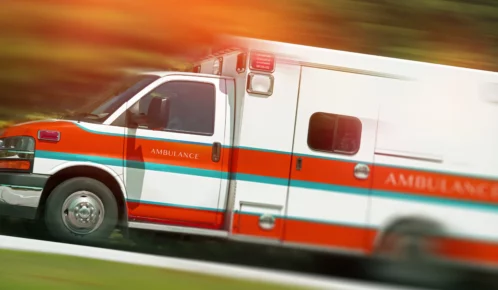Car crash reconstruction is commonly performed using advanced technology, collision simulation software, and physical evidence to determine what caused a motor vehicle accident. Reconstruction evaluates pre-impact circumstances and post-impact data to determine who is at fault for the accident and any injuries that result from the crash. Without thorough investigation and reconstruction, it would be difficult to establish liability for injuries and property damages.
Table of Contents
Accident Investigations
Accident investigations are conducted on many types of accidents such as boating accidents, car crashes, and work-related accidents. The most common accident investigations deal with car crashes that involve injuries or fatalities. When a car accident occurs, independent investigators or police officers conduct an investigation to determine what may have caused the crash and who was likely at fault. There are numerous aspects to an auto investigation:
- Independent investigators, typically hired by insurance companies or car accident attorneys, analyze the accident to determine the cause and financial liability based on who is at fault for the accident. Vehicles are inspected to determine the amount of damage and determine estimated repair costs for insurance purposes.
- Police officials look for criminal activity such as driving under the influence of alcohol or drugs, speeding, mechanical violations, and driving without a license or insurance. Vehicles are inspected to look for illegal substances or other evidence that may have contributed to the accident.
- Site inspections are done by investigators and/or police officials at the accident scene to look for skid marks, point of impact, and positioning of all vehicles. Site inspections include measurements, photographs of the accident scene, interviews with witnesses, and documentation of all evidence. Measurements taken with electronic equipment are used to generate computer images that help to reconstruct the accident.
Car Crash Reconstruction After the Accident Investigation
When an accident investigation is completed, a crash reconstruction can be started. Using all evidence collected during the investigation and special equipment, the car accident reconstruction can show vehicle speeds, vehicle weights, vehicle travel directions, vehicle positions, point of impact and impact angles, and post-impact movements.
Car accident reconstructions are useful in a variety of accidents including head-on collisions, rear-end collisions, side-impact crashes, and rollovers. By reconstructing the accident, experts can calculate crash speeds, skid distances, angles of collision, braking speeds, impact velocity, and places where vehicles came to a stop. Car crash reconstruction is particularly helpful in car crashes that involve two or more vehicles and in accidents where high speeds are suspected. For example, if one of the vehicles was found to be speeding before the collision, the crash reconstruction can actually calculate speeds by each vehicle based on vehicle locations, braking speeds, and point of final impact. When injuries result from a multiple-car crash, a Chicago car accident lawyer can use the crash reconstruction results to help prove fault for the accident.
Determining Fault and Liability
Illinois uses comparative fault laws to determine liability for auto accidents. To calculate damages, a modified comparative negligence rule is used, then damages are apportioned by the percentage of fault assigned to each party involved in the accident. According to Illinois law, a person’s recovery for damages will be reduced by his/her fault or negligence for the accident. For example, if the total accident damages total $150,000, and the person is found to be 60 percent at fault for the accident, $90,000 (60 percent of total damages) would be deducted. The person would be awarded $60,000 for damages, rather than the full amount of $150,000. In Illinois, to receive monetary damages, a person involved in an auto accident must be less than 50 percent at fault for the accident.
Proving fault in Illinois auto accidents is essential when calculating damages for personal injuries and/or property damages. In most cases, the party found to be at fault for the accident will be held liable for damages. If a fault cannot be clearly determined, or it is shared by several parties, damages are usually divided equally between all parties involved in the auto accident.
When injuries and property damages result from an auto accident, damages are typically divided into two main categories:
- Economic Damages – Economic damages include compensation for medical expenses for injuries, lost wages from necessary time off the job, and property damages for repairs or replacement of vehicles and structures.
- Non-Economic Damages – Non-economic damages include compensation for pain and suffering (present and future), physical disfigurement, physical and emotional disabilities, and inconvenience caused by the auto accident.
In Illinois auto accidents, injured drivers are allowed to seek economic and non-economic damages through a Chicago car accident lawyer against at-fault drivers, as well as limited punitive damages in some cases.



